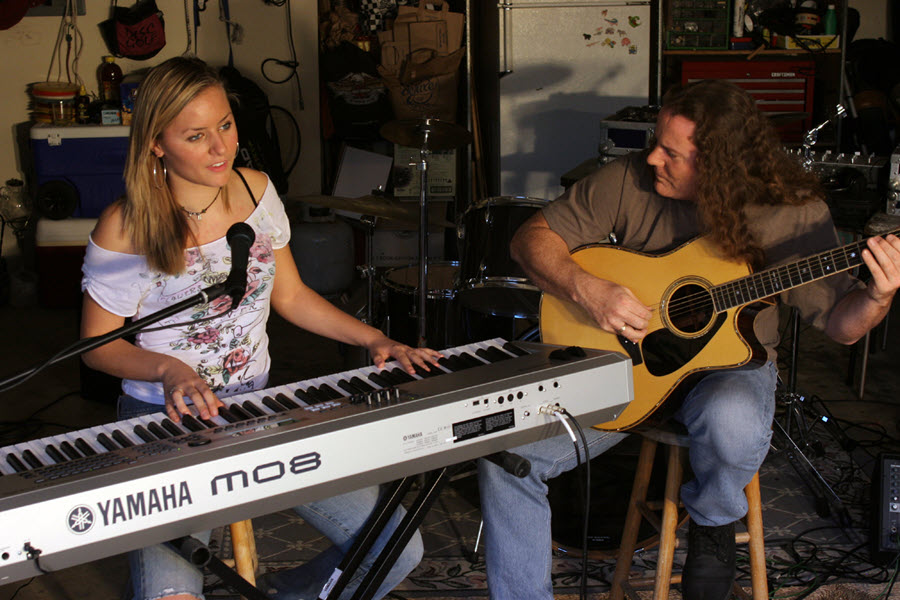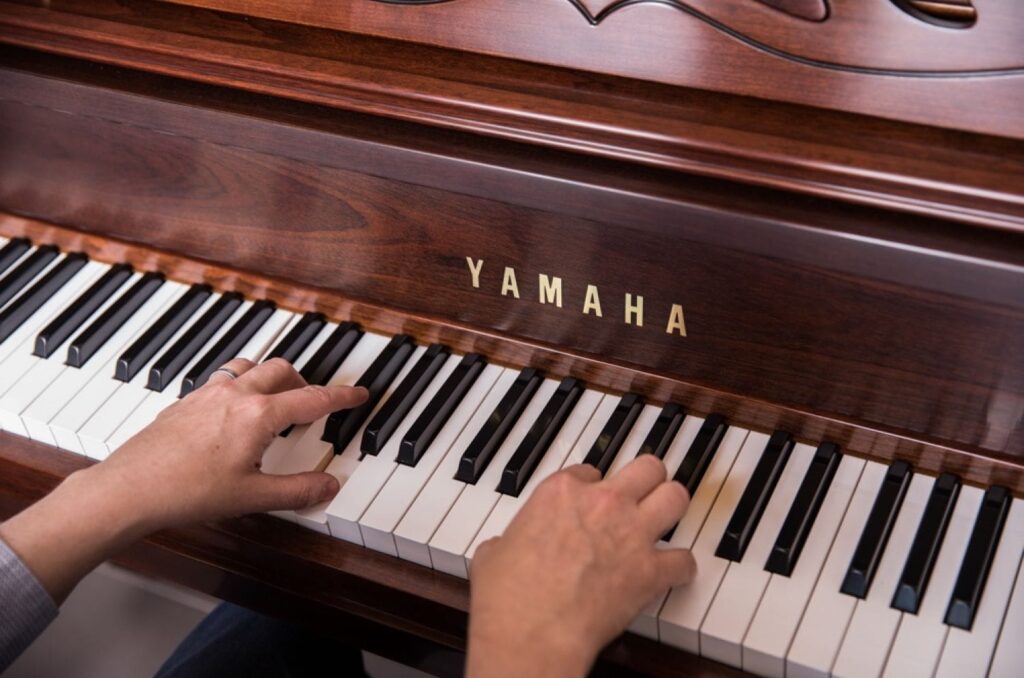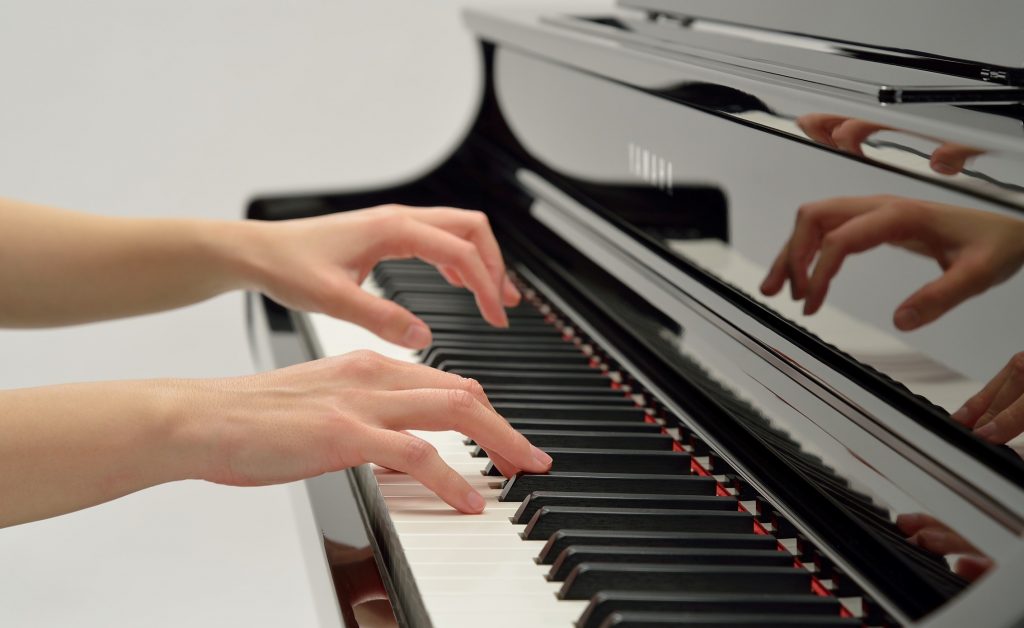Tagged Under:
How to Transform a Lead Sheet Into a Performance
Only given the melody and chords? No problem.
Lead sheets are a very basic form of sheet music that only show the melody of a song and the accompanying chords, with no indication of the keyboard part that should be played underneath. They’re often available in collections called “fake books” and are primarily intended for professional players as a quick way to access a song (or a lot of songs) at a live gig — instant repertoire expansion!
The challenge for a beginning keyboardist is to learn to develop a complete and convincing two-handed performance from these bare-bones guides. In this posting, we’ll show you how.
Note: You’ll need to have a good knowledge of chords, inversions and harmony to use lead sheets effectively. If your skills are a bit lacking in any of those areas, we suggest brushing up before moving on to the concepts below.
A Typical Lead Sheet
Here’s a typical example of a lead sheet for the Christmas classic “Deck The Halls”:
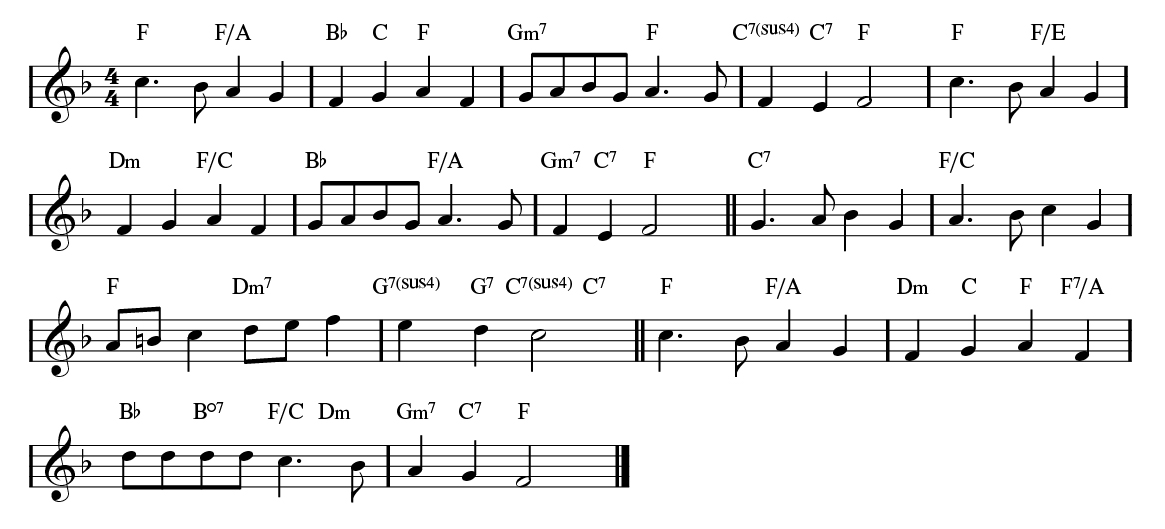
As you can see, only the melody is provided, along with chord symbols placed above the notes (lyrics are optional and may or may not be included). When first learning a song from a lead sheet, start by just playing the melody with your right hand and the root (the name of the chord, or the note presented after the slash mark) with your left hand, like this:
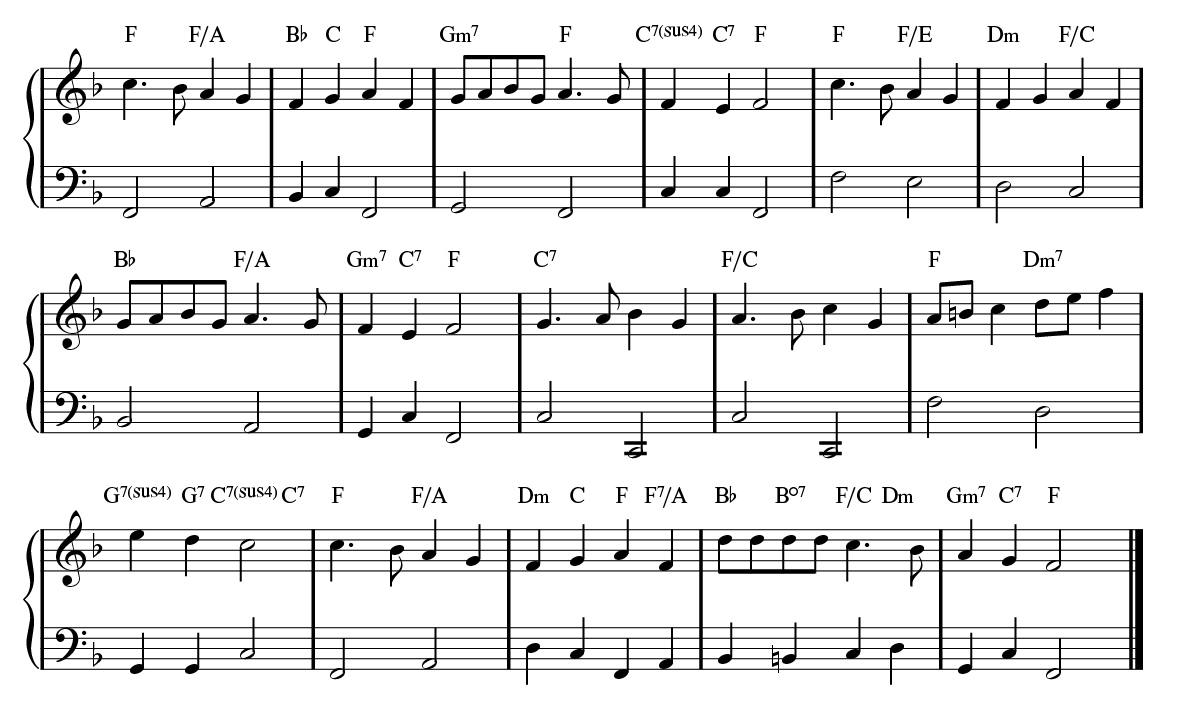
Now you can decide how you want to fill things in to create a more interesting accompaniment. The main goal here is to include more notes to fully represent the chords. This can be done with either your right hand or your left.
Creating a Chord Melody
Doing this with your right hand (while still playing the melody) results in what is known as a chord melody. Before you start that process, however, I suggest you learn how to block out the chords without playing all the moving parts of the melody, using well-chosen inversions that follow the melody nicely. For example:
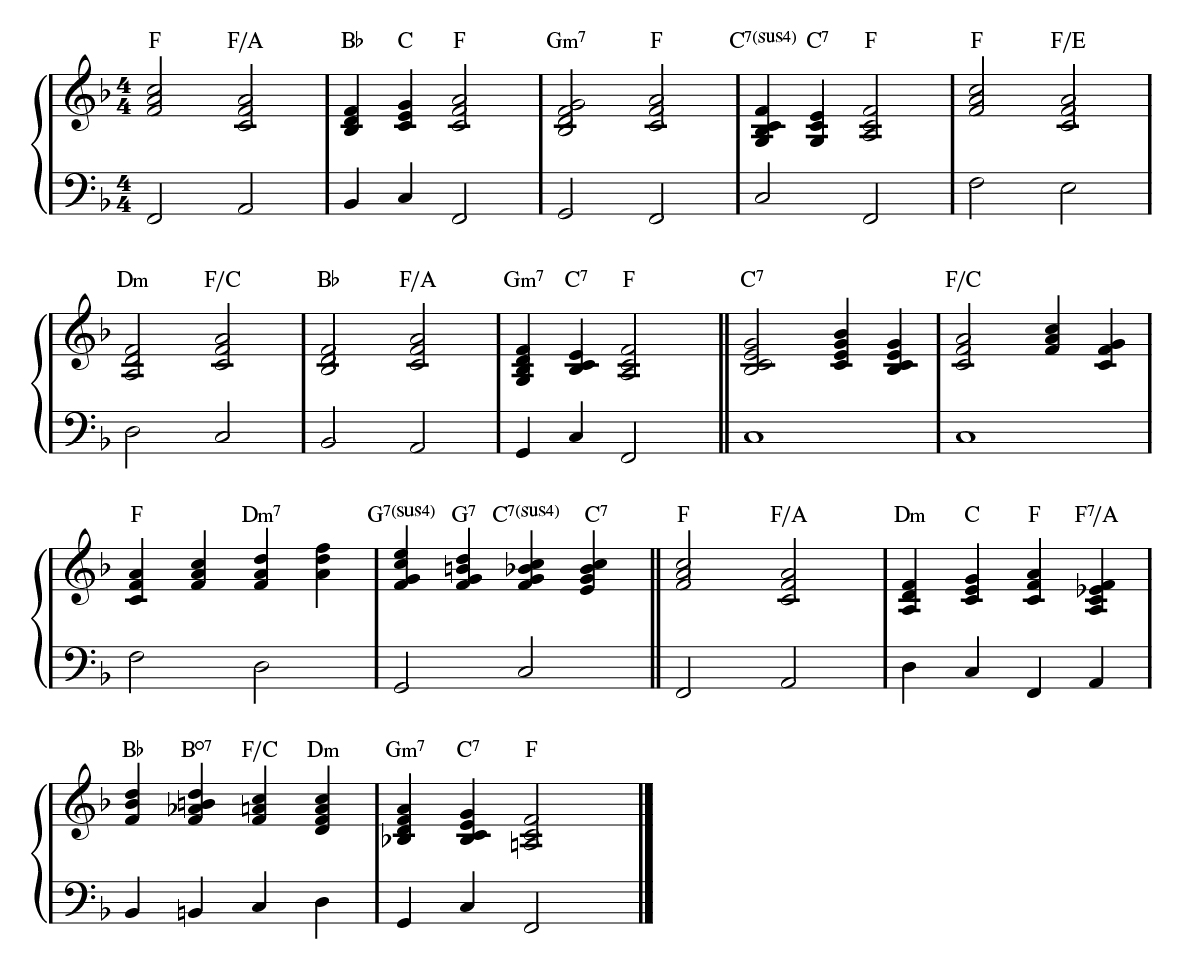
Once you’re comfortable with that, you can fill in the rest of the melody, say like this:
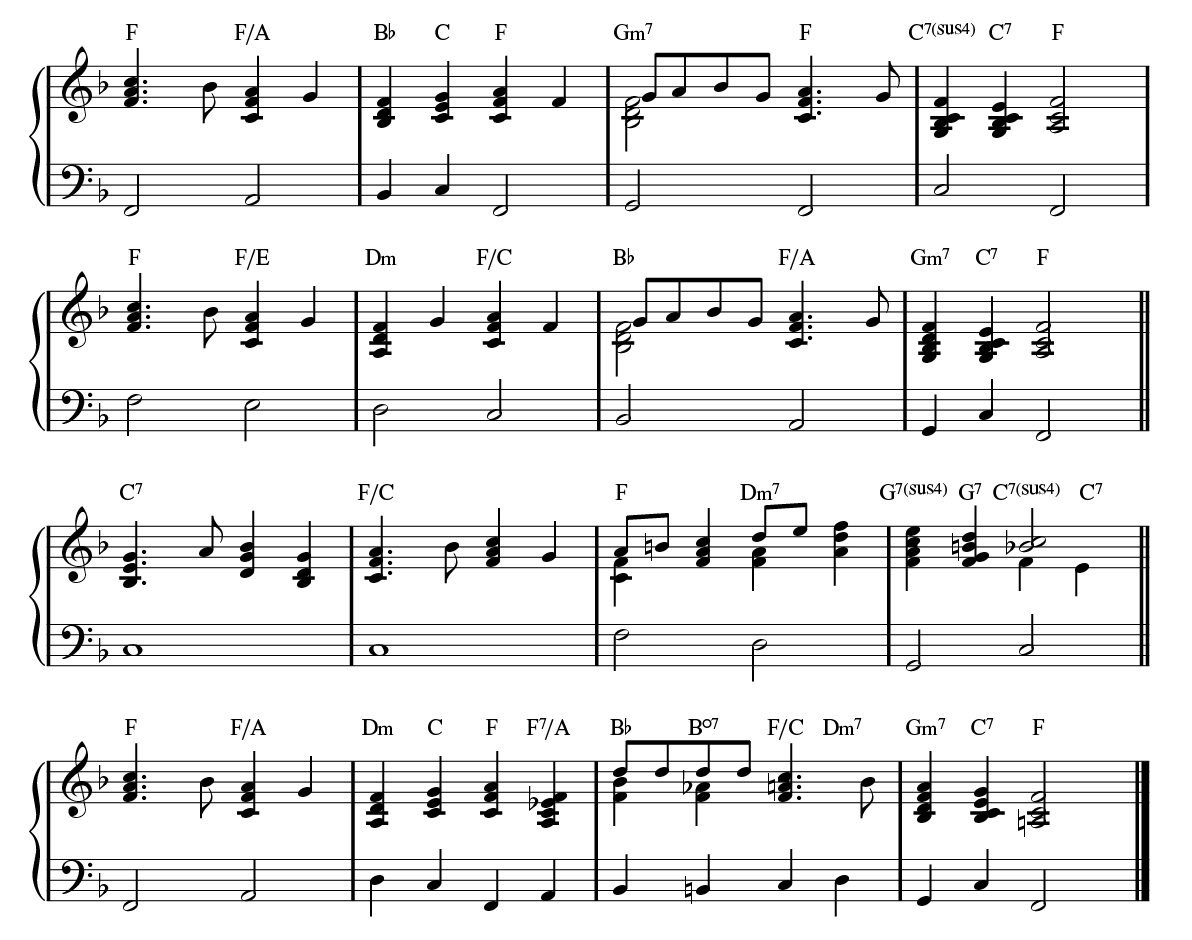
Left Hand Chord Support
There are a few ways to approach playing the chords with your left hand. Again, start by just blocking out the chords in a similar fashion to the way we did it with the right hand:

When that feels comfortable, you’ll want to choose some better voicings (groupings of notes) and inversions so you don’t jump around so much. Here’s an example:
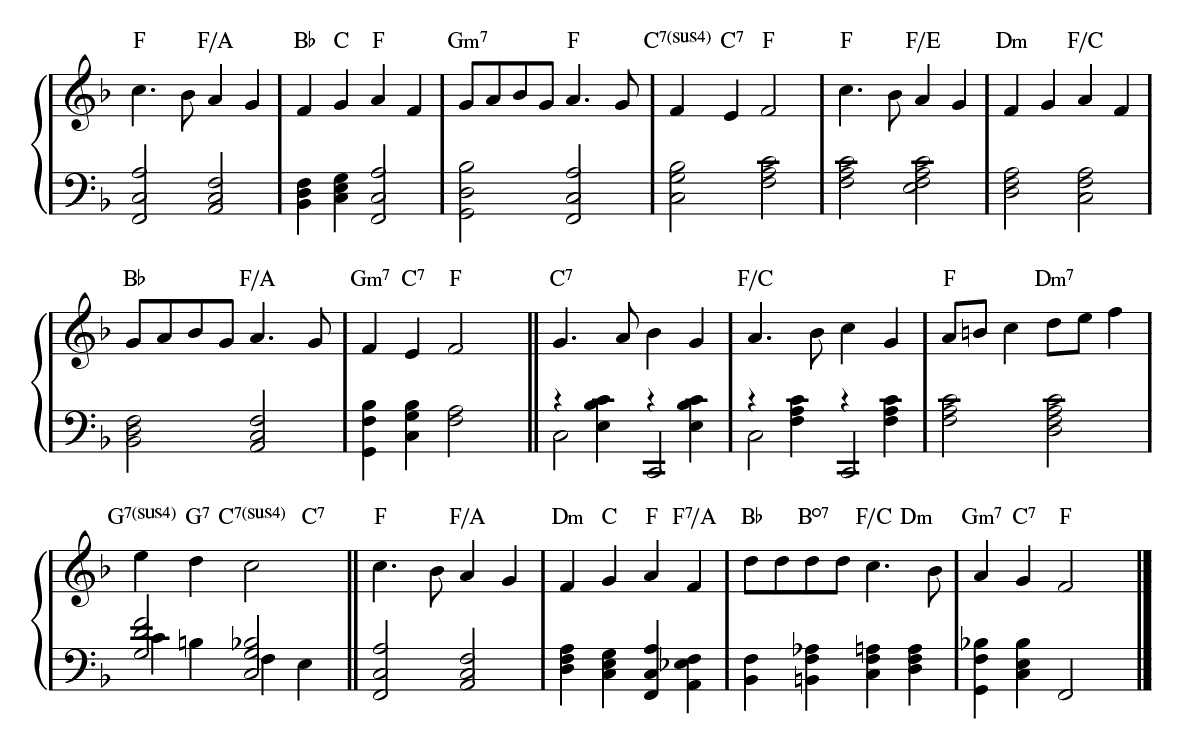
What’s different here?
- Some of the left-hand chords are spread apart wider to sound fuller — for example, bars 1 and 3
- Not all the left-hand voicings use all the notes of the chord (this is true of many of the C7 chords), since the missing note is being played by the right hand
- There’s a fancier left-hand alternating pattern playing on the middle C7 and F/C
- For the sus4 resolutions, only the 4-3 in each chord are moved so it doesn’t sound so clunky
Another approach would be to employ a simple stride pattern, where you alternate a bass note and a chord to add a nice rhythm to your playing:
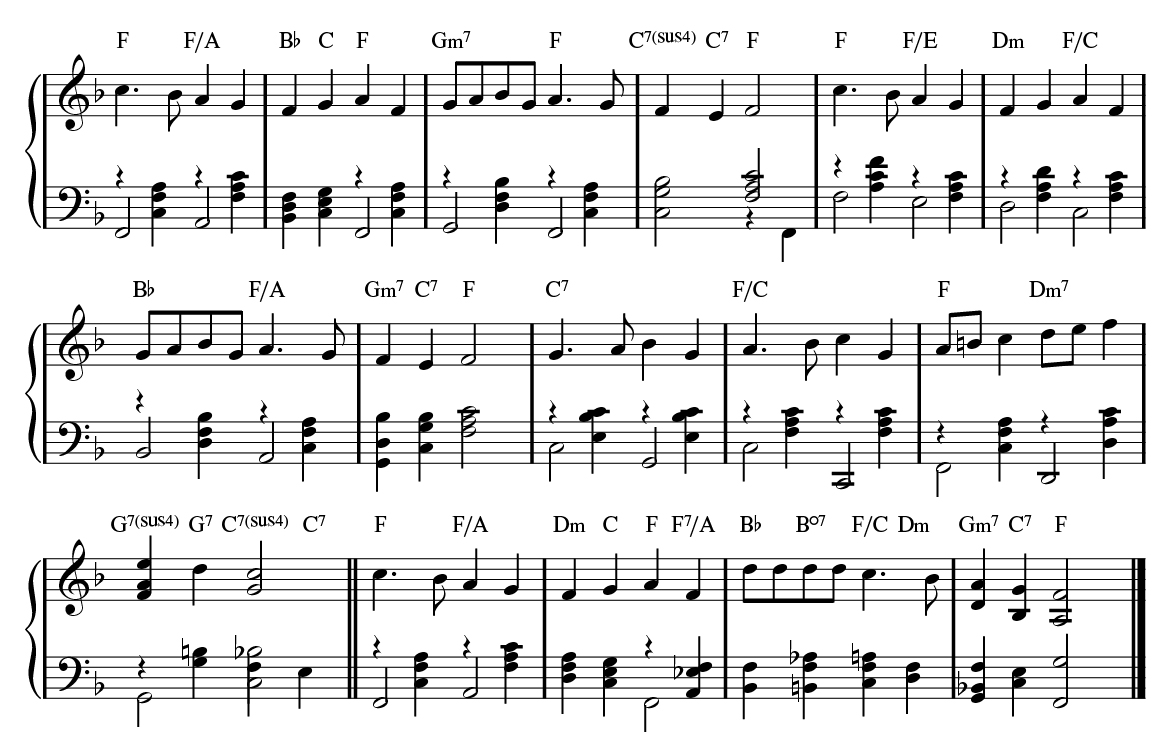
To create a more flowing feeling, try arpeggiating the chords (i.e., playing them as separate notes) instead:
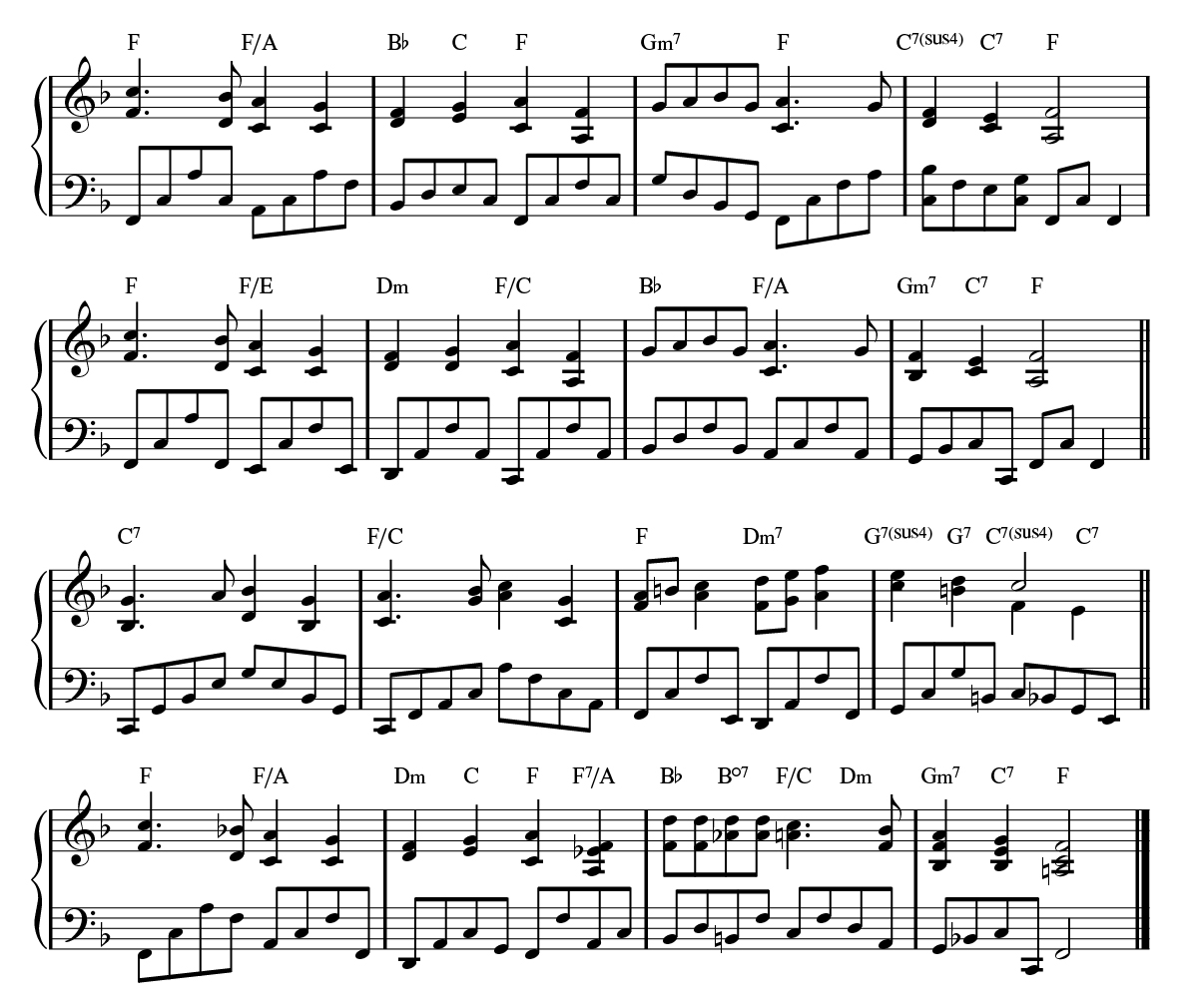
Spreading the Chords Between Both Hands
Spreading the notes equally between both hands is another good way to interpret a lead sheet. To do this, you’ll use the top fingers of your right hand (the ring finger and pinky) to play the melody, while the lower fingers of your left hand (again, the ring finger and pinky) play the bass notes. The remaining fingers in both hands can be used to play other notes to fill out the chord. This style of playing is common in church hymns (for example, the Bach 4-part Chorales), and is the basis that many jazz pianists use for playing solo piano.
To get started with this technique, go back to just playing the melody and the bass note slowly, as we did earlier (and as shown/demonstrated below). This will allow you to see and hear what the outer edges of the voicings will be.

Now just fill in some of the missing notes, trying to play at least one additional note with each hand. Some pianists like to be strict and not double any notes between the hands, but there’s really no hard and fast rule here: simply spread the notes nicely across both hands so it sounds good to your ears. Here’s an example of how this can work, with added pedaling (indicated by the sustain/damper pedal markings in the notation) to demonstrate how everything can be made to sound connected:
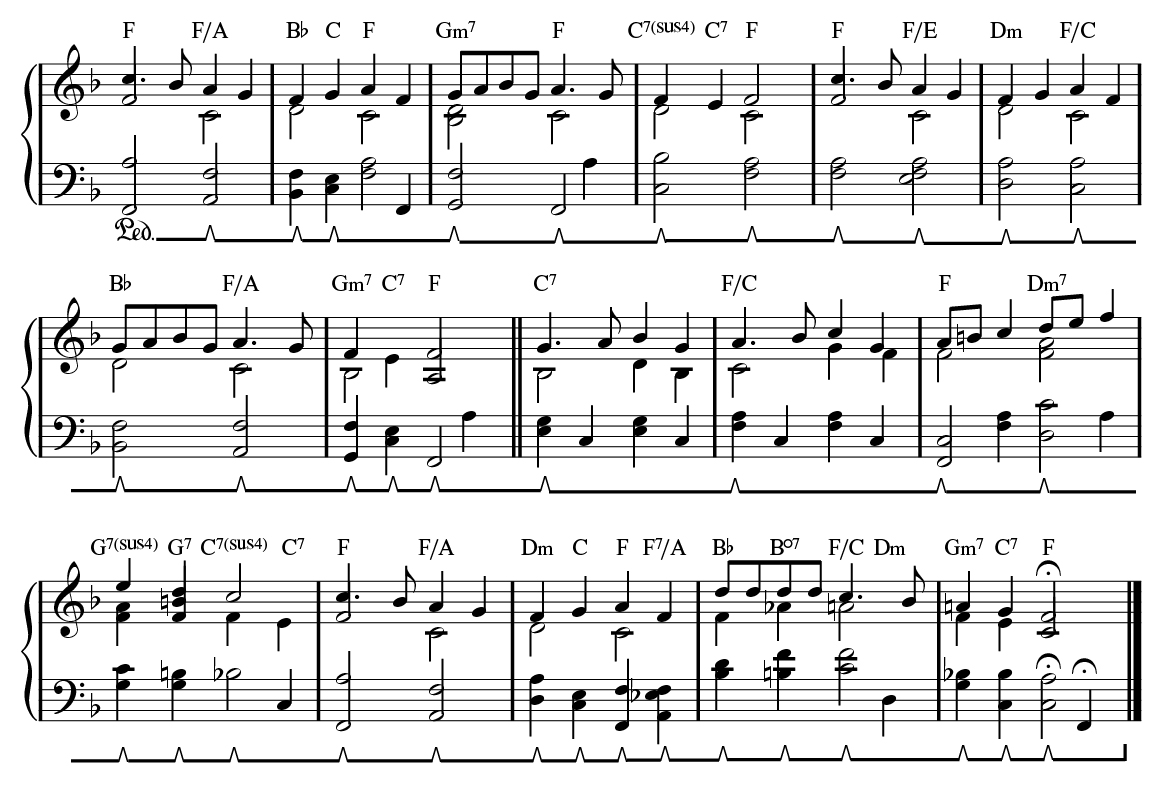
These are all good, solid approaches to transforming even the most basic of lead sheets into a complete performance you can be proud of. With practice, you’ll undoubtedly come up with more of your own. Happy faking it!
All audio played on a Yamaha P-515
Check out our other Well-Rounded Keyboardist postings.
Click here for more information about Yamaha keyboard instruments.











